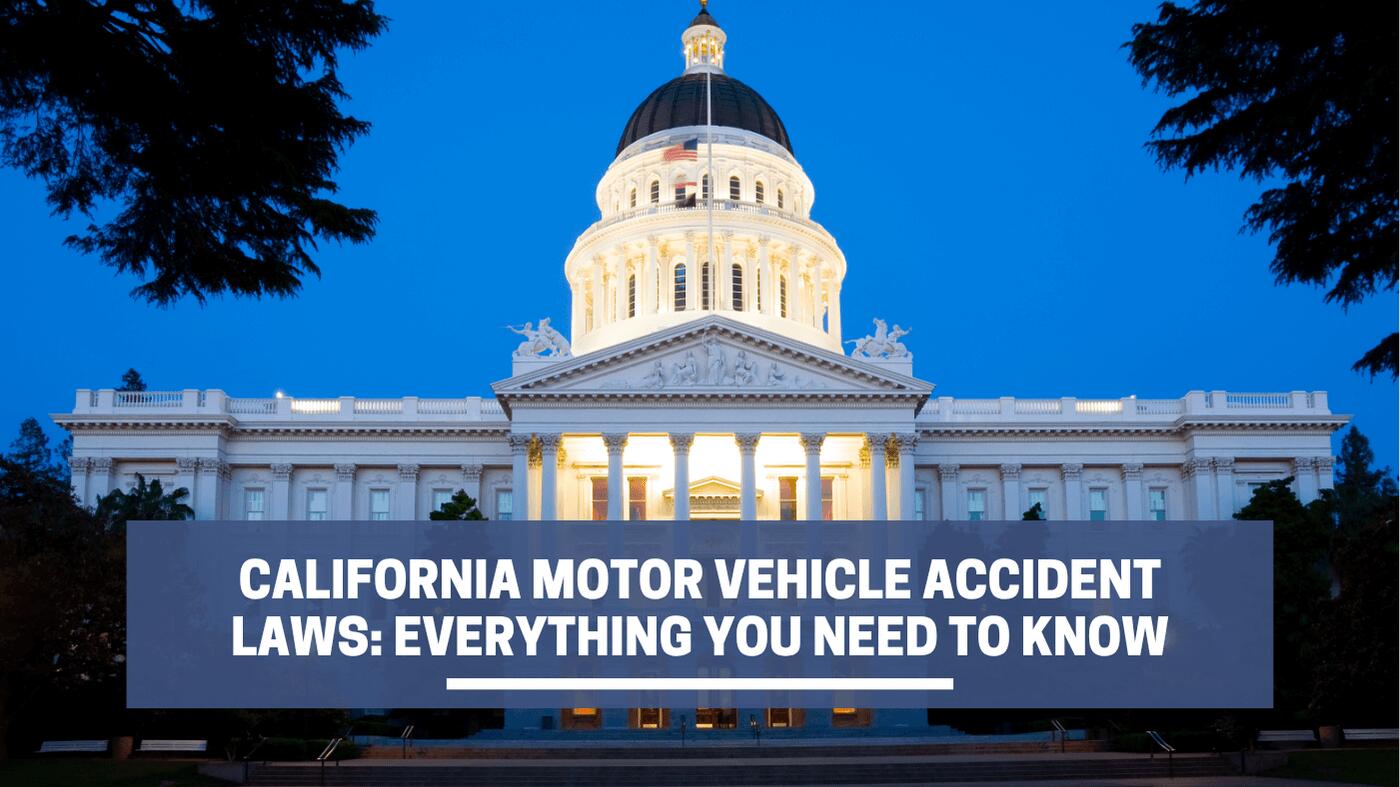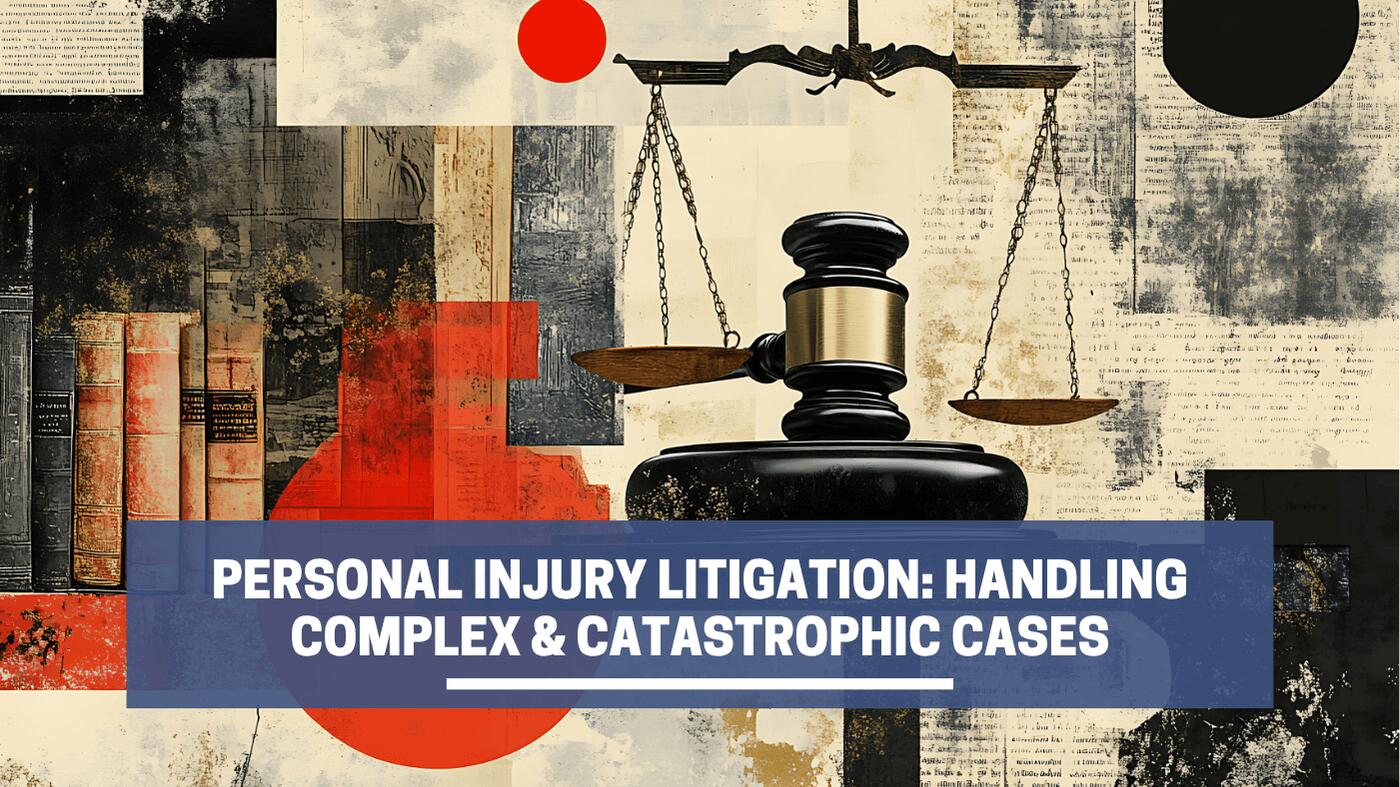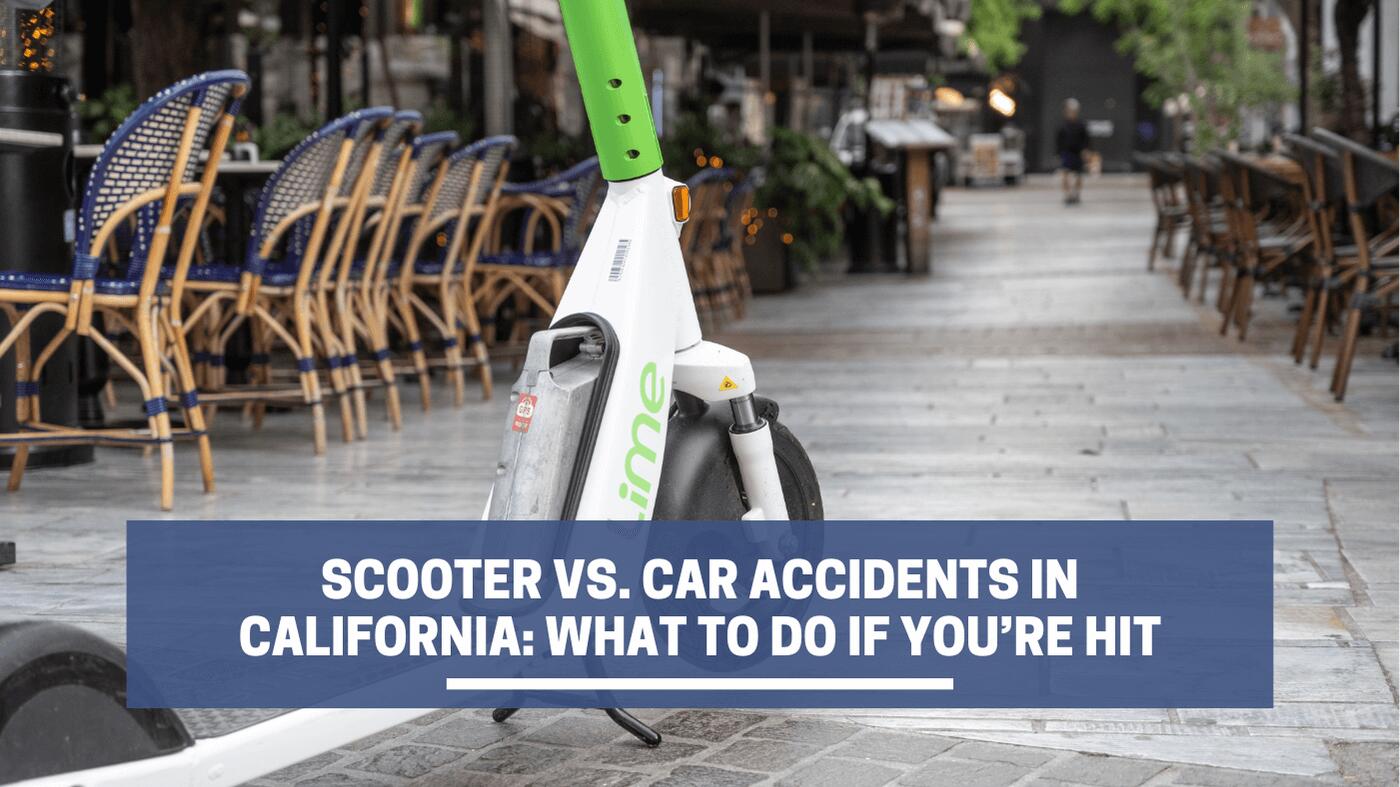More than 230,000 people are injured in California car accidents every year—do you know what your rights are if it happens to you? A crash can derail your life, whether it happens on a packed Los Angeles freeway or along a quiet Sierra-foothill road.
That’s why California’s motor vehicle accident laws exist—to create clear rules for reporting a collision, filing insurance claims, and determining who is financially responsible. Knowing your rights and the proper steps to take after a crash can make the difference between a denied claim and full compensation.
This California auto accident legal guide breaks down what you need to know about motor vehicle accident fault laws and compensation. It also explains how an experienced car accident lawyer can help protect your claim and negotiate for the best possible outcome.
What To Do After a Car Accident in California
Your top priorities after a crash should be safety, documentation, and communication. The actions you take in the first few minutes can shape your health outcomes, impact your insurance claim, and even determine your legal rights later on.
- Check for injuries and call for help. Call 911 immediately if anyone is injured. Even if the injuries appear minor, it’s best to have a medical professional evaluate everyone at the scene.
- Move to safety if possible. Pull over to the shoulder or a safe area, activate your hazard lights, and keep a safe distance from traffic.
- Exchange information. Get the other driver’s name, address, phone number, driver’s license, license plate, and insurance details.
- Document everything. Take photographs of both vehicles, the road, weather conditions, skid marks, and any visible injuries.
- Talk to witnesses. Ask for names and contact information in case you need statements later.
- Avoid admitting fault. Stick to the facts when talking to others or the police; statements like “I didn’t see you” can be taken as admissions of fault.
- Notify your insurer. Report the collision as soon as possible. Many policies require you to report within 24 hours.
- Get medical attention. Even if you feel fine, some injuries, like whiplash or a concussion, can take hours or days to show symptoms.
After ensuring everyone’s safety and reporting the crash, the next step is understanding the post-accident legal steps.
Reporting Requirements in California
California requires formal accident reporting in several situations. Failing to report properly can create problems for your insurance claim or even lead to penalties.
You must report the accident in these situations:
- Anyone was injured or killed, no matter how minor the injury.
- Property damage appears to exceed $1,000.
- The accident involves an uninsured driver.
If police didn’t respond to the scene and someone was injured or killed, notify law enforcement within 24 hours. You’re also required to file a Traffic Accident Report (Form SR-1) with the California DMV within 10 days.
Auto Insurance Claims in California
Once the crash has been reported, you need to file a claim, typically with the at-fault driver’s insurance. California requires insurance companies to adhere to specific deadlines when handling claims to prevent unnecessary delays.
Here’s how insurers typically process claims:
| Step | What Happens | Timeline |
|---|---|---|
| Claim Acknowledgment | The insurer confirms they received your claim. | Within 15 days of notice |
| Investigation | The insurer reviews the accident details, requests documentation, and determines fault. | Ongoing—must update you every 30 days if unresolved |
| Decision on claim | The insurer accepts or denies your claim after reviewing all proof of loss. | Within 40 days of receiving proof |
| Payment | If approved, the insurer must issue payment for the undisputed amount. | Within 30 days of acceptance |
The at-fault driver’s insurance generally pays for the injuries and damage. But under California’s fault laws, proving who’s responsible can be challenging.
Understanding Fault and Compensation
California uses a pure comparative fault rule, meaning that responsibility for a crash can be divided among all parties involved. Each party is assigned a percentage of fault, and that share determines how much compensation they owe—or can recover.
This can play out in several ways after a crash:
- Example A: Another driver runs a red light and slams into your car. You did nothing wrong, so they’re 100% at fault. If your damages total $100,000, you can recover the full amount.
- Example B: You were driving slightly over the speed limit when another driver suddenly swerved into your lane. You’re found 30% at fault for speeding, and they’re 70% at fault for unsafe driving. If your losses are $100,000, you receive $70,000.
- Example C: A texting driver in a Tesla hits you, but investigators find the crash partly caused by a brake defect. The manufacturer is 75% responsible, and the driver is 25%, so you still recover the full $100,000, split between both parties.
This system recognizes that several factors can contribute to a single collision. However, it also complicates determining liability in California car crashes.
Attorneys, courts, and insurance adjusters evaluate:
- Police and accident reports
- Physical evidence, such as vehicle damage and skid marks
- Witness statements and video footage
- Traffic laws and driving behavior
- Expert input from accident reconstruction and medical specialists
In Los Angeles County, which sees nearly 41,000 vehicle accidents per year, collecting strong evidence and working with an experienced car accident lawyer is key to proving fault and protecting your claim.
Insurance Requirements for California Drivers
California law requires every driver to carry liability insurance, but the minimum limits often don’t cover the real cost of an accident.
Current state requirements:
| Coverage Type | Legal Minimum (2025) |
|---|---|
| Bodily Injury (One Person) | $30,000 |
| Bodily Injury (Per Accident) | $60,000 |
| Property Damage | $15,000 |
Average settlement amounts for serious injuries or vehicle repairs can easily exceed these limits. The standard award for car accident cases is between $15,000 and $80,000, but for severe harm like brain trauma or spinal cord damage, that easily jumps to between $100,000 and $1 million. However, past results do not guarantee future results.
If the at-fault driver has little or no insurance, your uninsured (UM) or underinsured motorist (UIM) coverage can help bridge the gap. An uninsured motorist claim may cover medical expenses and lost wages; however, it’s not required in California.
An attorney can review both policies to clarify coverage and pursue the full California accident injury compensation available to you.
Statute of Limitations for Car Accidents
If you’re injured in a California crash, strict filing deadlines apply. These statutes of limitation determine how long you have to take legal action if an insurance claim doesn’t fully cover your losses.
- Injury or wrongful death claims. Two years from the date of the accident or death
- Product liability claims (defective vehicle or part). Two years from the date of injury
- Government claims. Applies in cases involving government agencies or public entities, such as school bus accidents. You have six months to file an administrative claim, and another six months to file a lawsuit if it’s denied.
Missing these deadlines usually means losing your right to seek compensation in court. Contacting an attorney immediately after an accident ensures your case is filed on time and properly documented.
Out-of-State Drivers in California Accidents
California attracts millions of visitors annually, particularly in bustling areas such as Los Angeles, San Diego, and San Francisco. If you’re involved in a crash while driving here, keep in mind:
- Claims and deadlines are governed by California law, regardless of where you live.
- Any lawsuit related to the crash generally must be filed in a California court.
- You must follow the same reporting, insurance, and legal rules as residents.
A local law firm familiar with California accident laws can handle filings, communicate with insurers, and protect your rights while you’re out of state.
Why Hire Legal Help After an Accident
After a serious crash, it’s easy to feel overwhelmed by forms, phone calls, and unanswered questions. Meanwhile, insurance companies are already working to limit what they pay. Having an attorney changes that.
A skilled auto accident lawyer specializing in personal injury law for car accidents in California can:
- Investigate the crash to collect evidence, interview witnesses, and build a clear picture of what happened.
- Prove fault and damages using medical records, expert opinions, and financial documentation.
- Communicate with insurers so you don’t have to navigate adjusters or risk weakening your claim.
- Track and meet every deadline to keep your case on schedule and protect your right to compensation.
- Negotiate or litigate for a fair outcome, whether that means a settlement or taking your case to court.
With strong legal representation, insurers are far less likely to delay, underpay, or dispute your claim.
Get Guidance After a California Car Accident
Car accident laws in California are designed to protect drivers; however, navigating the legal process on your own can be confusing and stressful.
At The Shirvanian Law Firm, our award-winning team understands the high stakes involved after a serious crash. We investigate what happened, stand up to insurance companies, and pursue the maximum recovery you’re entitled to.
Contact us today to schedule a complimentary consultation to discuss your claim and legal options for recovering compensation.
FAQs
Is California a no-fault state for car accidents?
No. California is a fault-based state. The at-fault driver or third party responsible for causing the crash is liable for damages through their insurance.
How is fault determined in an accident?
Fault is based on evidence, like police reports, photographs, witness statements, and citations for violating traffic rules. Insurance adjusters and attorneys review these details to decide liability.
What if I was partially at fault?
You can still seek damages, but under pure comparative fault in California, your percentage of liability will reduce the amount you receive.
Can I still get compensation if I didn’t go to the doctor right away?
Yes, but waiting to seek treatment can hurt your claim. Get medical attention as soon as possible to document your injuries and protect your legal rights.
How much is the average car accident settlement in California?
Settlements depend on the severity of the injury, the degree of fault, insurance limits, and the long-term financial impact.











